6 Best Horizontal Pull Exercises (with Pictures!)
When speaking of vital back muscle exercises, one would be remiss to forget those of a horizontal pulling movement. Exercises like the barbell row or face pull have become an essential in modern resistance training programs, and are the go-to for any purpose remotely related to the muscles of the back and biceps.
As such, it is important for even the newest of weightlifters to understand what makes an exercise a horizontal pulling one - and how they can best take advantage of this particular class of exercises.
Horizontal pulling exercises will vary in terms of their muscular target, mechanics and even equipment requirements. However, they all involve pulling force towards the body along a horizontal plane. Movements like rows and pulls make up the majority of horizontal pull exercises.
What is a Horizontal Pull Exercise?
Horizontal pulling exercises are classified according to the direction in which force is created. If the exercise involves pulling an object towards the body or pulling the body towards an object in a horizontal direction, then it is considered to be a pulling exercise.
In most cases, horizontal pulling exercises will include elbow flexion, scapular retraction and external shoulder rotation - although exceptions do exist, and as such identifying an exercise by its biomechanics is not the best approach.

Horizontal pulling exercises are most often compound movements that involve bilateral contraction of muscles in the arms and back, and are frequently paired with vertical pulling exercises so as to provide a more comprehensive workout of the entire back’s musculature.
Muscles Targeted by Horizontal Pulling Exercises
While it will vary between exercises, the majority of horizontal pulling movements target muscles like the posterior deltoid head, biceps brachii, latissimus dorsi and trapezius.
Best Horizontal Pull Exercises
1. Barbell Bent-Over Rows
The quintessential horizontal pulling exercise; barbell bent-over rows are a multi-joint compound movement most often used as the primary compound exercise in a back workout.
They are utilized by lifters of all training disciplines, and are entirely accessible to all but the most inexperienced of exercisers.
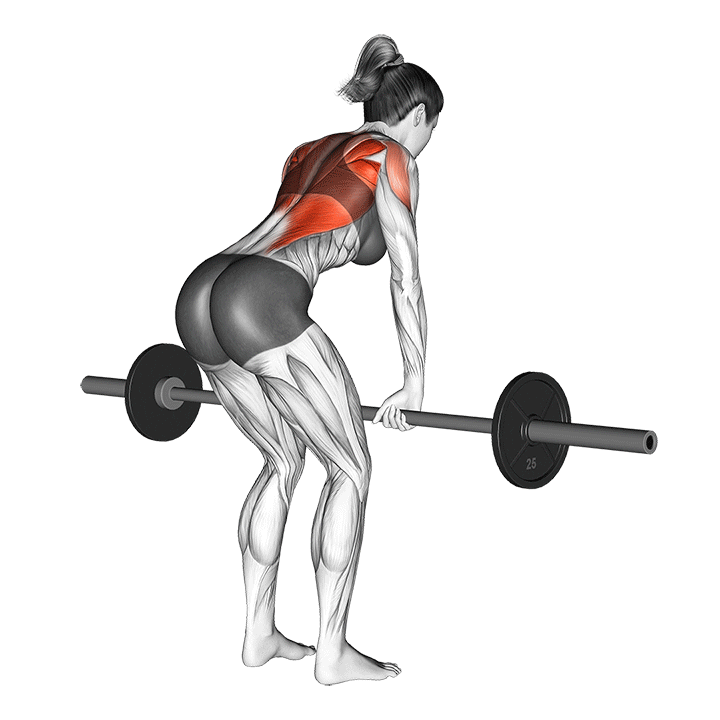
Benefits and Purpose as a Horizontal Pulling Movement
Barbell bent-over rows are the quintessential heavy load horizontal pull, as they allow for a significant amount of weight to be lifted while simultaneously targeting nearly every muscle found in the back.
Due to the intensity of each repetition, the barbell row is most often programmed as the primary compound exercise within a workout - although it is also occasionally used as a secondary compound exercise to other back-focused exercises like the deadlift or weighted pull-up.
Equipment Needed
Barbell rows require a barbell and a pair of weight plates.
Muscles Worked
Barbell bent-over rows primarily target the latissimus dorsi, biceps brachii and trapezius - but will also recruit the rhomboids, teres muscles, posterior deltoid heads and erector spinae.
How-to:
To perform a repetition of the barbell bent-over row, the lifter will bend at the hips and knees until the torso is nearly parallel with the floor, a loaded barbell held in an overhand grip beneath them.
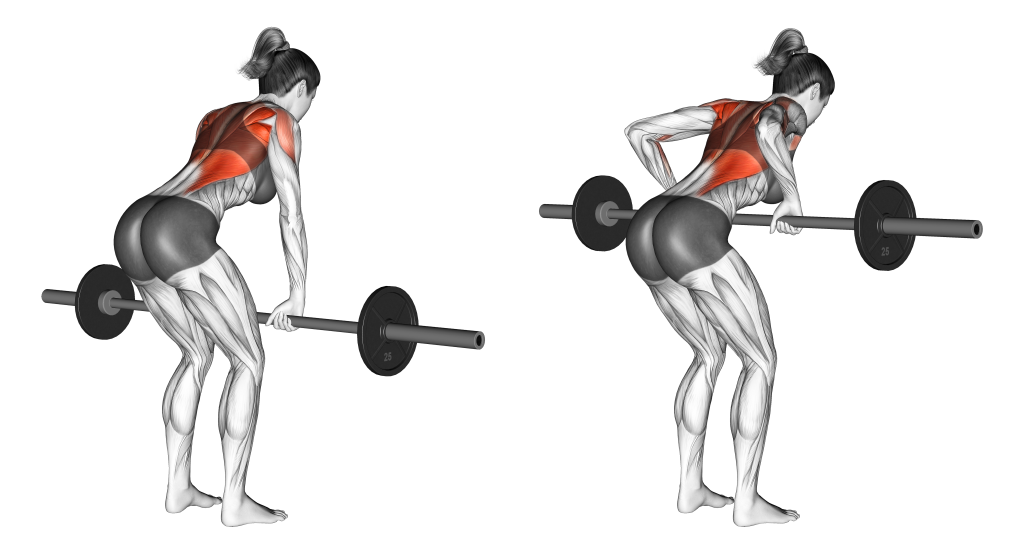
Ensuring the lower back is straight and the shoulder blades held in a secure manner, the lifter will then pull their elbows behind their body, drawing the barbell towards their sternum or waist.
Once the barbell is within several inches of touching the torso, the lifter will then slowly reverse the motion, extending their arms beneath the torso and thereby completing the repetition.
2. Dumbbell Single-Handed Rows
For a more unilateral take on the conventional row, lifters may wish to instead perform the dumbbell single-handed row.
Unlike the barbell row, the dumbbell row is meant to be performed with somewhat less weight - instead making up for it with greater emphasis on the muscles of one side of the body, as well as a more forgiving stance.
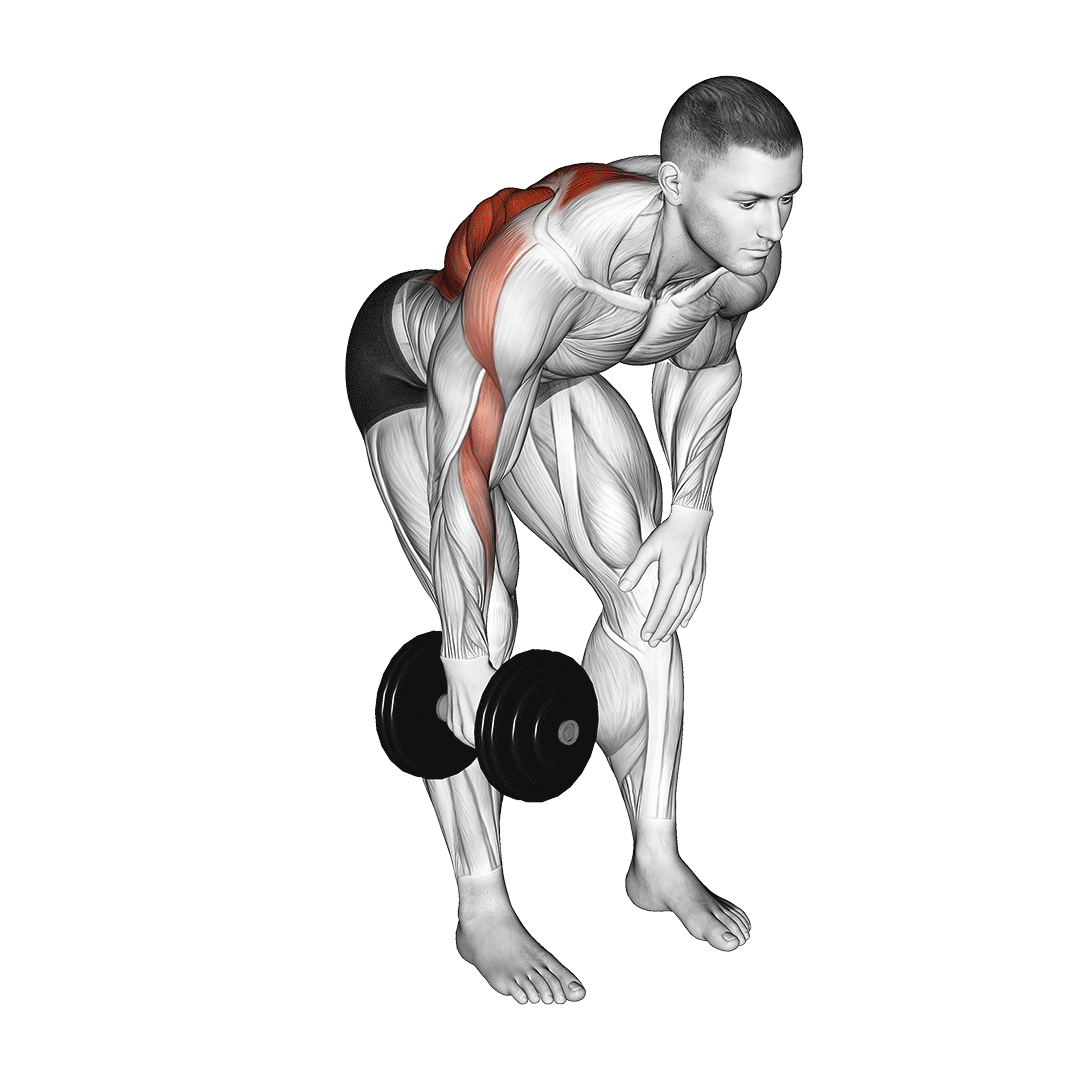
In a similar nature, the dumbbell row is also a multi-joint compound exercise best known for its capacity to act in a unilateral manner. This can allow for greater volume, less overall stress on the connective tissues and neurology of the lifter, and reduced risk of the lower back as the lifter may support themselves on hands and knees.
Benefits and Purpose as a Horizontal Pulling Movement
The dumbbell row is used as a primary or secondary compound movement in many back workouts, and is best known for its applicability to lifters of all experience levels, be it complete beginners or advanced bodybuilders seeking greater hypertrophy.
Apart from the aforementioned benefits of the dumbbell row’s unilateral characteristic, the dumbbell row also allows for a more forgiving grip and forearm orientation to be used (i.e. not an overhand one), and as such is overall considered to be the more comfortable exercise in comparison to many other barbell-based row counterparts.
Equipment Needed
Dumbbell rows require only a single dumbbell, but can be made safer with an exercise bench or similar object.
Muscles Worked
Dumbbell rows primarily target the latissimus dorsi, trapezius, teres major, rhomboids and posterior deltoid head - and will either place greater emphasis on the biceps brachii or brachialis, depending on whether an overhand or neutral forearm orientation is used.
How-to:
To perform a dumbbell row, the lifter will bend at the waist and hips, extending one arm beneath them so as to support the torso, with the opposite arm gripping a dumbbell in either an overhand or neutral grip.
Ensuring the lower back is in a neutral curvature, the lifter will contract the muscles of their back and draw their elbow behind their torso, pulling the dumbbell towards their torso until the elbow is at least parallel with the sides of the body.
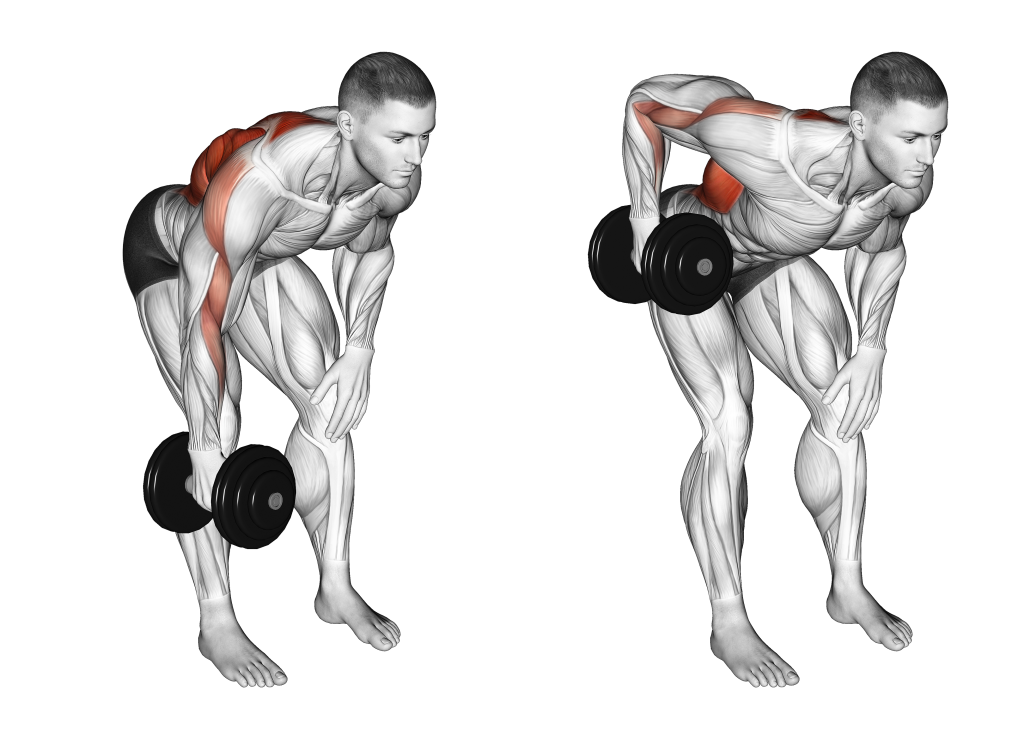
From this position, the lifter will simply reverse the motion and return the dumbbell (and their arm) back to its original position beneath the torso - thereby completing the repetition.
Remember to also perform the movement with the opposite side of the body for an equal distribution of training stimuli.
3. T-Bar Rows
T-bar rows are a barbell row variation best known for its traditionally close-grip stance and usage of a landmine apparatus to create an angled resistance - all in a multi-joint compound movement excellent for building up mass in the arms and upper back.

Of course, a few versions of the T-bar row (the machine T-bar row, single-arm T-Bar row or overhand T-bar row) will not benefit from the same muscular recruitment pattern due to variations in mechanics and stance, but will nonetheless feature a similar angle of resistance and range of motion.
For a larger range of motion, it is advised that lifters use smaller weight plates, rather than fewer large ones, as larger weight plates will touch the torso sooner.
Benefits and Purpose as a Horizontal Pulling Movement
The T-bar row is most often featured as a primary compound movement in training programs that emphasize the upper back, especially in regards to its neutral-grip free weight variation.
T-bar rows can also be used as a secondary compound movement alongside heavier and more technically complex exercises like the barbell bent-over row or the deadlift.
Unlike other horizontal pulling exercises, T-bar rows are performed in both a nearly-upright stance and with the hands set close together in a neutral orientation, meaning that the risk of injury is considerably lower and greater emphasis is placed on the elbow flexor muscles of the arms.
Equipment Needed
T-bar rows will require a barbell, a weight plate, a T-bar handle and a landmine attachment.
For lifters without access to a T-bar handle, they may grip the neck of the barbell instead - and those without a landmine attachment may weigh down the opposite end of the barbell with heavy objects, provided that it is securely pressed into the ground.
Muscles Worked
T-bar rows will work the muscles of the latissimus dorsi, the trapezius, the rhomboids, the teres muscles, the infraspinatus and the posterior deltoid head. Depending on the grip used, the biceps or the brachialis and brachioradialis will be recruited as well.
How-to:
Bending at the pelvis while maintaining a neutral spinal curve, the lifter will grip the barbell (or the T-bar handles) in both hands, preparing to perform the repetition by keepings the arms extended beneath the torso.
The knees may also be bent so as to achieve a larger range of motion.
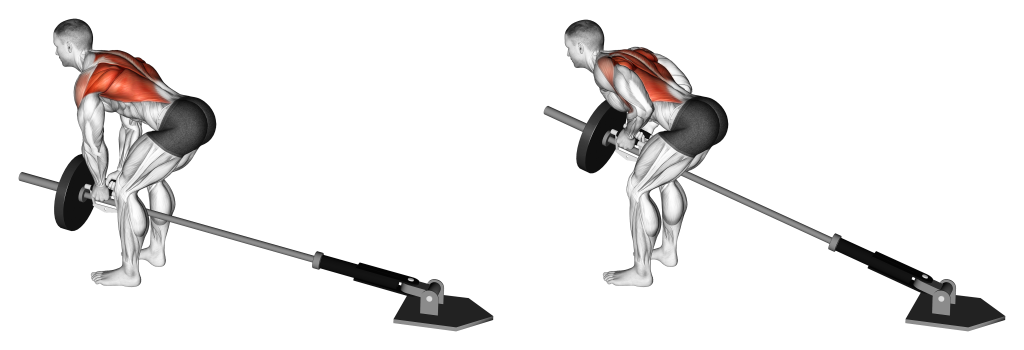
Then, contracting the muscles of the back, the lifter will draw the barbell upwards as they keep their torso as stationary as possible. The elbows should be drawn behind the torso, with care taken not to flare them out to the sides excessively.
Once the plates of the barbell touch the torso, the lifter will simply reverse the motion, thereby completing the repetition.
4. Cable Rows
In cases where a machine-based horizontal pull is needed, the conventional cable row is the most popular choice.
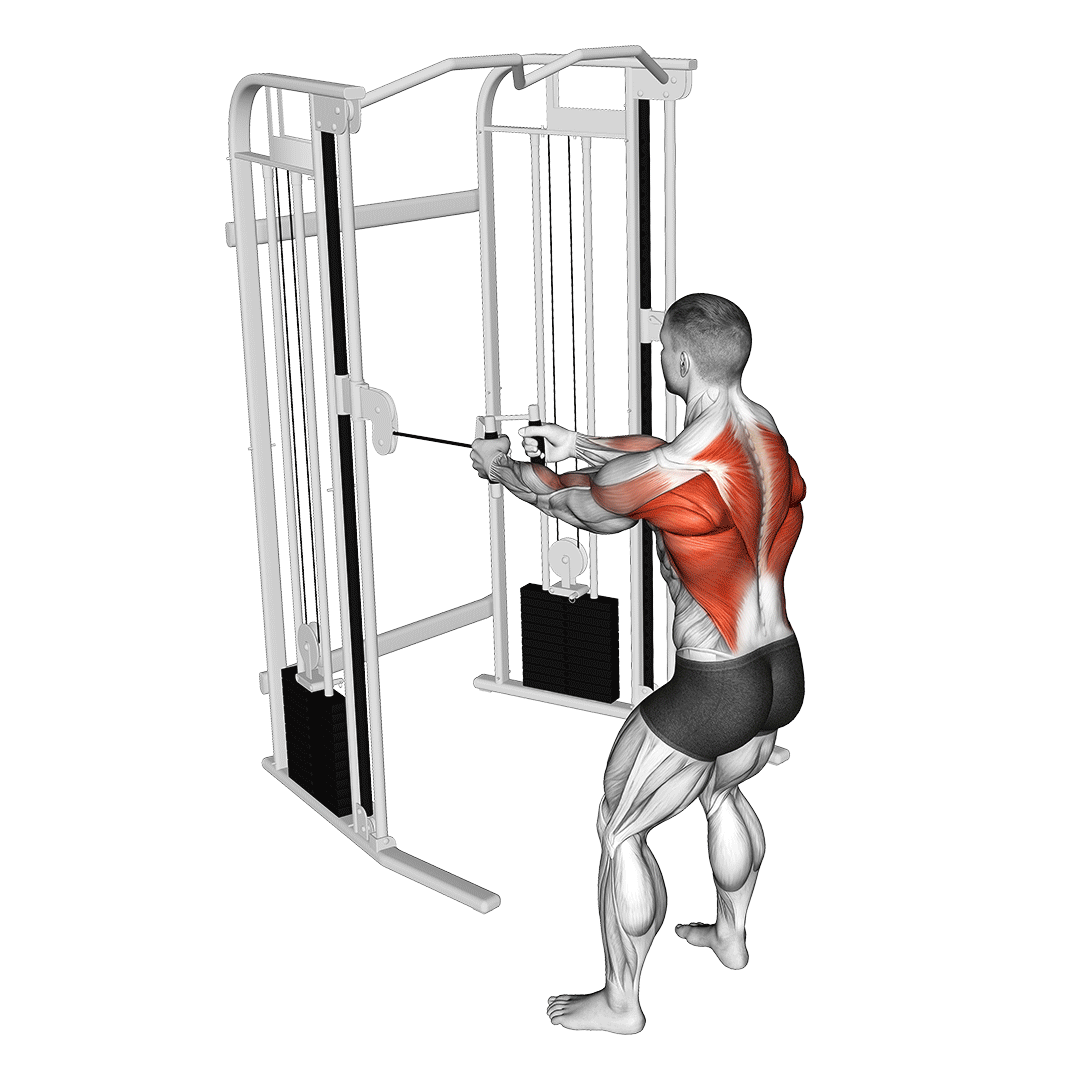
Like its free weight counterparts, cable rows are a multi-joint compound movement best used for training the muscles of the back and arms.
Their self-stabilizing nature and ease of modification make them useful for novice and advanced weightlifters alike, and particularly useful for high-volume meant to emphasize the upper and middle back musculature.
Benefits and Purpose as a Horizontal Pulling Movement
Cable rows are either employed as a primary or secondary compound movement - although moreso a secondary one due to the inherent disadvantages of using machine-based resistance training as a primary exercise.
Due to its machine-based nature, the cable row is highly accessible and may easily be modified according to the lifter’s needs and preferences.
Characteristics that are normally hard-set into other horizontal exercises can easily be altered with the cable row, with angle of resistance, grip orientation and even bilateral or unilateral recruitment simply requiring a change in the cable attachment used.
Equipment Needed
Cable rows will require a cable machine with the capacity to place the pulley horizontally parallel with the torso.
Muscles Worked
Cable rows emphasize the muscles of the trapezius, teres muscle group, rhomboids and latissimus dorsi - but will also recruit the posterior deltoid head and biceps brachii as well.
How-to:
To perform cable rows, the lifter will either seat themselves atop the machine’s bench or assume a stable upright stance as they hold the cable handle at arm’s length, ensuring that their chest is pushed outwards and the core muscles contracted.
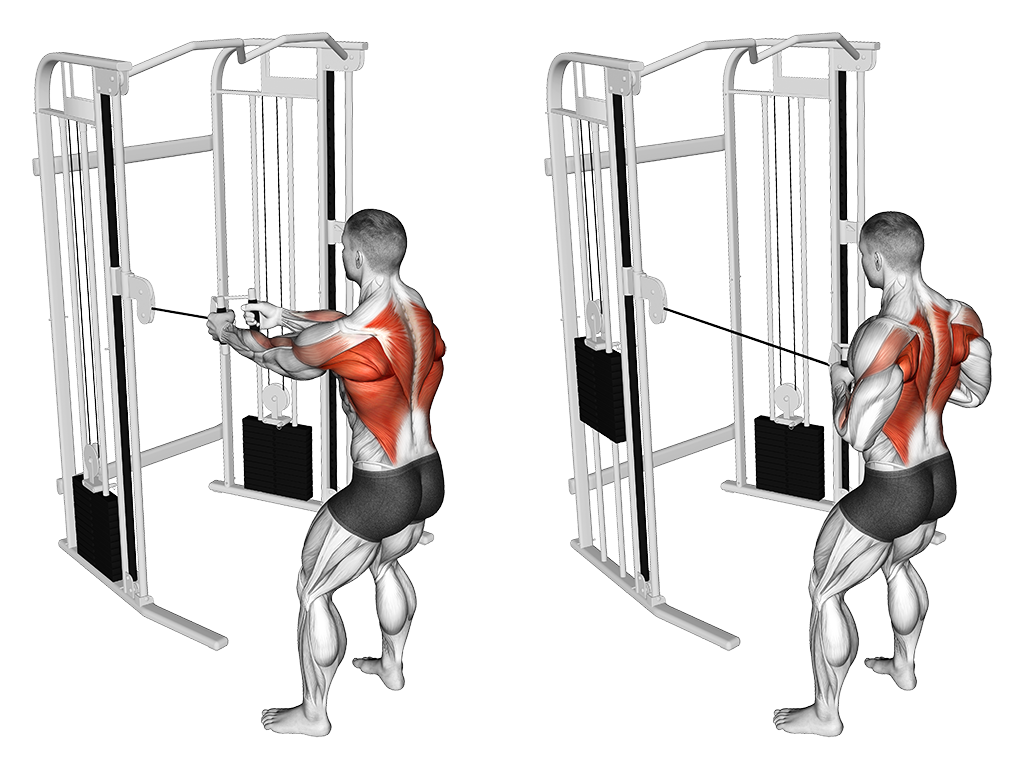
Then, contracting the muscles of the back and arms, the lifter will draw the handle towards their sternum in a slow and deliberate manner, squeezing their shoulder blades together as the handle comes within several inches of touching the torso.
From this point, the lifter will simply reverse the motion, extending their arms back out in a similarly slow manner so as to complete the repetition.
5. Face Pulls
A unique horizontal pulling exercise performed with the use of a cable machine, the face pull is a multi-joint compound movement used as both a strength training tool as well as a rehabilitative one.
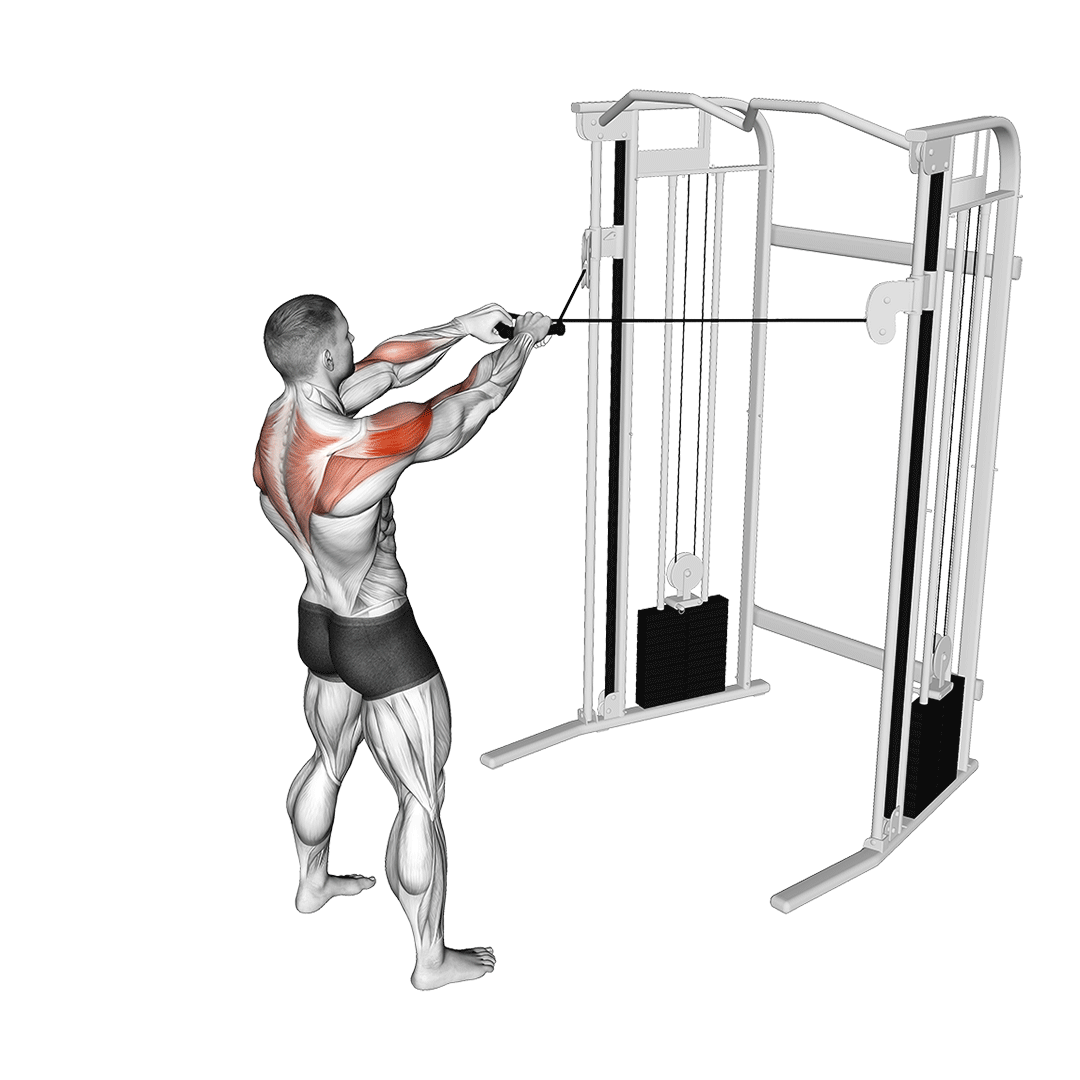
Unlike other horizontal pulling movements, face pulls are not meant for targeting the muscles of the back (apart from the trapezius) and as such are more of a shoulder-focused movement specifically used to reinforce what is commonly the weakest portion of the shoulders - that being the posterior deltoid head and rotator cuff.
Benefits and Purpose as a Horizontal Pulling Movement
Face pulls are used as an accessory exercise for the purposes of reinforcing and mobilizing the entirety of the shoulder joint, and are commonly programmed for high volume sets placed at the end of the workout session.
In addition to strengthening the shoulders, face pulls may also be further used for improving the lifter’s posture, preparing them for heavier horizontal pulling movements or otherwise rehabilitating weak or injured rotator cuff musculature.
Make sure that you have the go-ahead from your doctor before using face pulls as a rehabilitation tool.
Equipment Needed
Face pulls will require a cable machine and a double-ended rope handle attachment.
Muscles Worked
Face pulls target the posterior deltoid head and the muscles of the rotator cuff, but will also recruit the trapezius and rhomboids in a secondary and isometric capacity.
How-to:
Standing upright with their arms extended ahead of the torso at shoulder-height, the lifter will grip both ends of the rope as they ensure their shoulder blades are loose and neutral in position.

To begin the repetition, the lifter will retract their shoulder blades, following the movement with their arms as they draw the rope towards their face, elbows traveling backwards and to the sides as they do so.
Once the shoulder blades are at the limit of their range of motion and the hands are parallel to the skull, the lifter will reverse the motion and disengage their shoulder blades in a slow and controlled manner.
Once the arms have returned to their fully-extended state, the repetition is considered complete.
6. Inverted Rows or Horizontal Pull-Ups
One of the few calisthenic horizontal pulling exercises is the inverted row; a multi-joint compound exercise that involves the exerciser suspending themselves with the torso horizontally angled to the floor, before literally “rowing” their own body in a manner that is the inverse of a conventional barbell row.
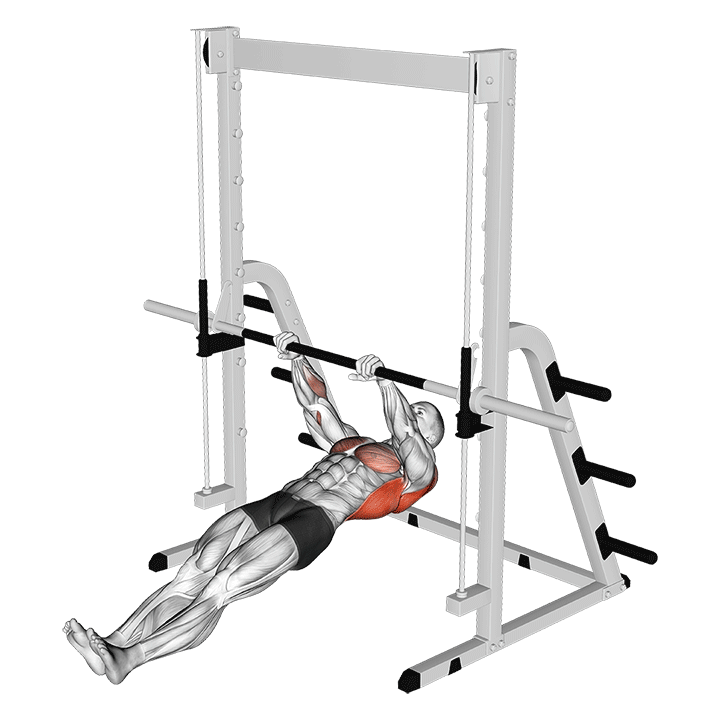
Inverted rows are occasionally referred to as “horizontal pull-ups”, and train much the same muscle groups in an admittedly less intense fashion, allowing for greater volume to be achieved and the opportunity for exercisers to use it as a progression to more difficult calisthenic back exercises.
Benefits and Purpose as a Horizontal Pulling Movement
Inverted rows are used as a primary compound exercise in calisthenic training programs, but may also take a secondary role to heavier exercises like the pull-up - or even as an accessory movement in non-calisthenic workouts that involve heavy back exercises like the barbell row or lat pulldown.
Inverted rows are excellent for acting as an equipment-free method of including a horizontal pulling exercise into a workout, but are also quite useful for reinforcing the stability of the torso in a low-impact and easily accessible manner.
Equipment Needed
Inverted rows require only an object from which the exerciser can suspend themselves from. While a barbell or smith machine is the most common item to use, exercisers may also use a sturdy chair or table in a pinch.
Muscles Worked
Inverted rows will train the latissimus dorsi, rhomboids, trapezius, the rear head of the deltoids and the biceps brachii.
How-to:
Gripping their chosen object over their torso in a double overhand grip, legs extended before them, the exerciser will contract their core and squeeze their glutes so as to ensure the body is in a secure position.
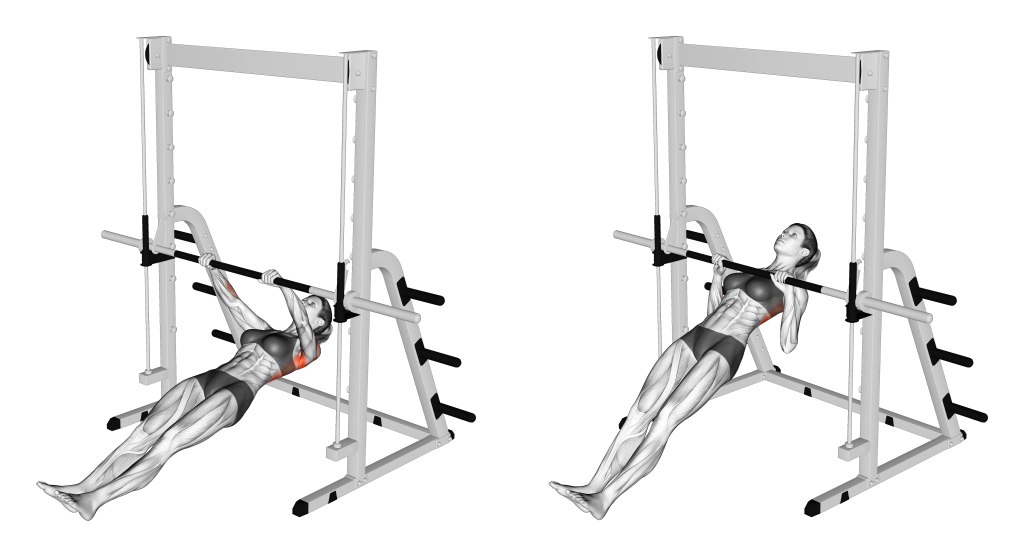
To begin the repetition, they will retract their shoulder blades and bend at the elbows, drawing their chest upwards until the upper arms are parallel to the ground.
To complete the repetition, the exerciser will then simply reverse the motion, returning their torso to its original position and extending the arms once more.
Final Thoughts
Where horizontal pull exercises lack variability, they make up for in effectiveness. Lifters seeking a thicker back, better shoulder blade movement and greater shoulder stability will wish to include at least one horizontal pull into their training for the best results possible.
By incorporating the exercises listed here into your workouts, developments in overall upper body strength and muscle mass are all but guaranteed. For the best results, ensure that proper programming is followed, and that correct form is made a priority.
References
1. Fenwick, Chad M J et al. “Comparison of different rowing exercises: trunk muscle activation and lumbar spine motion, load, and stiffness.” Journal of strength and conditioning research vol. 23,2 (2009): 350-8. doi:10.1519/JSC.0b013e3181942019
